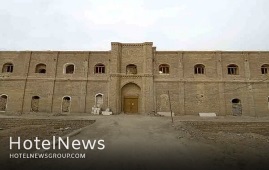
The first boutique hotel in the southeastern province of Sistan-Baluchestan will soon be put into operation. Mojtaba Mir-Hosseini, the deputy director of Cultural Heritage, Tourism, and Handicrafts Department of Sistan-Baluchestan said that the first boutique hotel in the province will be opened in the historical citadel of General Mohammad Hosseini Khan Narui, located in the village of Qala-e-Naw, Zahak city. The monument has been repaired and restored at the cost of 21 billion rials (about $500,000 at the official rate of 42,000 rials) and is scheduled to be put into operation by the end of April. He said: "Construction of the courtyard wall, implementation of flooring and landscaping behind the building, construction of pavilions, WCs, separation of the walls of the citadel, implementation of access stairs to the upper floor, repair, restoration and equipment inside the citadel, including renovation of living rooms, kitchen, management rooms, handicraft salesrooms as well as installation of doors and windows of spaces, repair of internal stairs and correction of the height of stairs, landscaping, and parking in the space behind the citadel, etc. are among the ongoing measures.” Mir-Hosseini added: "In fact, boutique hotels are hotels that display the rich history, tradition, and culture of the region, and such hotels are more popular among foreign tourists and are considered as tourist attractions."
Create: Apr 19, 2021 Edit: Apr 19, 2021 Regional News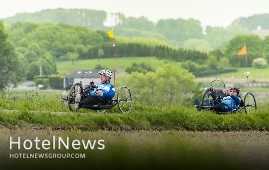
The World Tourism Organization (UNWTO) will continue to build on its successful partnership with the Spanish ONCE Foundation and the European Network for Accessible Tourism (ENAT). The three parties have agreed to extend their partnership agreement for a further four years to ensure that their work to improve accessibility, in every part of the tourism value chain, continues during and beyond the pandemic. The joint work will continue to focus on the promotion of good practices during the current crisis, the application of standards, the measurement of accessible tourism, as well as labour inclusion and institutional disability inclusive policies. The three partners are currently collecting success stories of destinations and companies which have adopted new sanitary protocols to facilitate access to travel and tourism for all, including both residents and visitors. In line with the key UNWTO Recommendations released early on during the pandemic, the Accessibility Champions initiative is still open for submissions illustrating how the guidelines to restart tourism without imposing new obstacles are being successfully implemented. The most outstanding cases will be promoted by the partners through an e-publication and webinars. The three partners are also committed to raising awareness of the forthcoming ISO Standard on Tourism for All. All three have worked with the International Standardization Organization (ISO) on the new requirements and recommendations. The ISO standard will represent a milestone, being the first global standard aimed at implementing and improving accessibility throughout the tourism value chain. The awareness-raising work will sensitize institutions, governments and service providers o the importance of accessibility for all and inclusion. It will make clear that this is not only a question of human rights and equal opportunities, but also a major competitive advantage for destinations and the private sector. UNWTO, the ONCE Foundation and ENAT jointly state: “Accessibility for all is about service quality, innovation and comfort for all tourists, new sources of revenue and new clients with disabilities, seniors and families with young children, among many other individuals, with specific access requirements. By adopting Universal Design principles in the development of environments and services, the tourism sector can fulfil its moral responsibility and, in many countries, legal obligations to cater to those with specific requirements, making tourism for all a reality.”
Create: Apr 17, 2021 Edit: Apr 17, 2021 International News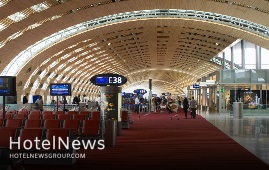
All flights to and from France have been suspended due to the outbreak of the coronavirus, the spokesman of Iran’s Civil Aviation Organization (CAO) has announced. Flights to and from 39 countries with special conditions are also canceled until further notice, Mohammad Hassan Zibakhsh said on Wednesday. However, Iran’s flag carrier IranAir is set to resume flights to and from the United Kingdom after months of suspension imposed to curb the spread of a novel coronavirus variant into the Islamic Republic, the official added. Back in February, Iran suspended flights to and from 32 countries including Angola, Bolivia, Botswana, Burundi, Cape Verde, Chile, Colombia, the Democratic Republic of the Congo, Ecuador, Eswatini, French Guinea, Lesotho, Guyana, Malawi, Mauritania, Mauritania, Rwanda, Sicily, Suriname, Tanzania, Uruguay, Venezuela, and Zambia. Earlier, Iran announced it would reduce the validity of negative COVID-19 PCR test results from 96 hours to 72 hours for inbound and outbound passengers. The new regulation replaced a role that required to bar passengers from boarding if they do not have a negative COVID test within 96 hours of departure. All passengers are subject to the medical screening on arrival, and if they are suspected of having the disease, non-Iranian nationalities will be quarantined at a place specified by the Health Ministry at their own expense and Iranian citizens will need to self-isolate for 14 days. The worldwide outbreak of COVID-19 has brought the world to a standstill, and tourism has been the worst affected of all major economic sectors. World tourist arrivals fell by 72% over the first ten months of 2020, according to data compiled by the World Tourism Organization (UNWTO) in December. Restrictions on travel, low consumer confidence, and a global struggle to contain the coronavirus pandemic are amongst factors contributing to the worst year on record in the history of tourism. Iran has also suffered the same fate as its foreign arrivals plunged 72% during the first eight months of 2020 when compared to 2019.
Create: Apr 15, 2021 Edit: Apr 15, 2021 Regional News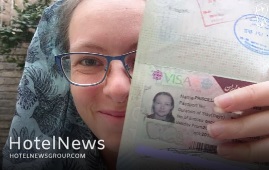
Iranian Tour Operators Association is formulating a proposal for the resumption of tourist visas after months of suspension amid strict government measures to prevent the spread of coronavirus. “Iranian visas are being granted to medical tourists… and we have requested the Foreign Ministry to issue the same permits for the applicants of other tourism arenas,” ISNA quoted Ebrahim Pourfaraj who presides the association, as saying on Monday. “In a meeting with Seyyed Kazem Sajjadi, the deputy Foreign Minister for Consular, Parliamentary, and Expatriates Affairs, I was supposed to provide some information and a plan for re-issuing [tourist] visas,” he explained. The veteran expert has asked the government to issue tourist visas for the international applicants who have been fully vaccinated against COVID-19. “The Ministry of Health and the National Headquarters for Coronavirus Control can at least agree that the international tourists who have received the [second dose of] coronavirus vaccine would be allowed to enter Iran.” Last month, he lamented that the continuation of such a trend would result in losing international tourist markets more than before. “Or at least they should make it clear so that we can respond appropriately to foreign companies and tourists to not to miss the international tourist markets more than before.” Pourfaraj believes that the reasonable prices of Iran tours are expected to bring back the boom into the tourism sector of the country in the post coronavirus era. “Attractive tour plans are also being prepared for those who are eager to explore the historical attractions and natural wonders of the ancient country and want to experience a vacation here.” Pourfaraj also expressed hope that international tour operators and companies who have worked with their Iranian counterparts for years, would put Iran back on the world’s travel route again, considering the facilities they can get at cheaper prices than in other countries. Last November, the World Tourism Organization announced that international tourist arrivals to Iran plunged 72% during the first eight months of 2020 when compared to 2019, highlighting the severe impact of COVID-19 as the main factor. Cultural Heritage, Tourism, and Handicrafts Minister Ali-Asghar Mounesan in October warned that Iran’s cultural heritage and tourism will be in a critical situation if the crises caused by the outbreak of the coronavirus continue. Last August, Mounesan said that Iran’s tourism has suffered a loss of 12 trillion rials (some $2.85 billion) since the outbreak of the coronavirus pandemic. Furthermore, the minister also noted that the coronavirus pandemic should not bring traveling to a complete standstill. “Corona is a fact, but can the virus stop tourism? Certainly not. For us, the coronavirus is a new experience in dealing with crises that teaches tourism experts around the world how to deal with such a disaster, and thankfully governments are turning this into an opportunity for better planning.” Smart and responsible traveling should replace "do not travel” recommendations, the minister stressed, adding: “In our country, Corona has caused problems in the tourism industry and the worrying point is the continuation of this trend.” “We are well aware of what the National Headquarters for Coronavirus Control proclaims [the health protocols], hence as a proposal, we have formulated some smart, responsible travel packages by the implementation of which we could have secure travels,” the minister said. He has repeatedly announced that his ministry is in full coordination with the Ministry of Health for strictly implementing health protocols in travel destinations, hospitably centers, and museums, amongst others, underlining that “people’s health is our priority.” The ancient land embraces hundreds of historical sites such as bazaars, museums, mosques, bridges, bathhouses, madrasas, mausoleums, churches, towers, and mansions, of which 24 being inscribed on the UNESCO World Heritage list. Under the 2025 Tourism Vision Plan, the country aims to increase the number of tourist arrivals from 4.8 million in 2014 to 20 million in 2025.
Create: Apr 15, 2021 Edit: Apr 15, 2021 Regional News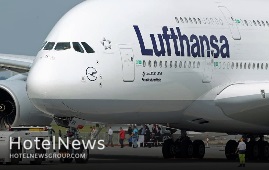
German airline Lufthansa announced on Friday that it would resume flights from Frankfurt to Tehran from April 16. Lufthansa had suspended flights in January 2020 after the Islamic Republic accidentally downed a Ukrainian jetliner amid an exchange of hostilities with U.S. forces in Iraqi soil. The airline said it has since assessed security measures by Iran with national and international authorities. “The conditions for safe flight operations in Iranian airspace are currently in place,” it said in an emailed statement, Reuters reported. In January 2020, however, the EU Aviation Safety Agency (EASA) approved that European airlines can return to parts of Iranian and Iraqi airspace. EASA announced, following an EU aviation security risk group meeting, that it was lifting temporary recommendations against overflying the two countries altogether. Lufthansa was among airlines that canceled flights over the affected airspace. On January 3, 2020, a U.S. drone strike assassinated top Iranian general Qassem Soleimani and in an act of retaliation, Iran fired missiles at U.S. targets in Iraq on January 8. The Ukrainian airliner was accidentally shot down by Iran’s air defense as it was on high alert in the tense aftermath.
Create: Apr 5, 2021 Edit: Apr 5, 2021 Regional News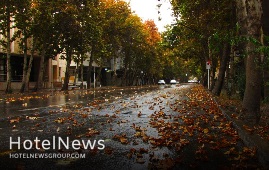
Over the past years, Tehran’s Vali-e Asr Street, famed as the longest in West Asia, has undergone countless maintenance works as a prerequisite for a possible UNESCO registration. The leafy street runs for over 17 kilometers from the railway station in the south of the metropolis to the Tajrish square in the north. It is lined with many shops, restaurants, parks, cinemas, and cultural centers. Tehran’s District 11 Mayor Nasrollah Abadian has recently talked about restoration works is has carried out on the southernmost section of the thoroughfare, which is situated in the district. “Vali-e Asr Street, which is the longest in West Asia, has undertaken extra maintenance and restoration works as a prerequisite for a possible UNESCO registration…. Four Kilometers of it is situated in the district 11 and others in the districts of 6, 3, and 1, respectively,” Abadian said. Landscaping and the beautification of urban spaces, flooring, and the protection of green spaces of the street are amongst tasks being practiced, he explained. “Vali-e Asr Street is the best example which witnesses the persistent exercises of creating the concept of Garden-Street as a destination of an urban area from the Safavid era up to the modern time,” according to the UNESCO website. “A variety of architectural styles from traditional to modern and eclectic is a representation of eastern and western values synthesis in a specific geographical point, which carries a true definition of an architectural and spatial place.” In the 19th century, the route once passed through Shemiran gardens, barren fields between Tehran and Shemiran, Yusef Abad, Abbas Abad, and Behjat Abad ending at its southernmost tip inside the then Qajar-era town of Tehran. Vali-e Asr Street, which is registered on Iran’s National Heritage list, was added to the UNESCO’s temporary list in 2019. The street is one of the main urban elements of the Iranian capital in the north-south direction.
Create: Apr 5, 2021 Edit: Apr 5, 2021 Regional News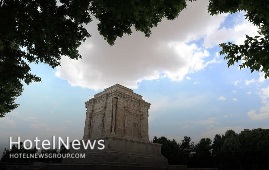
A total of 1,176,415 visits to the historical sites and natural sights of the northeastern Khorasan Razavi province was recorded during the two-week New Year (Noruz) holidays (March 20-April 2). Historical city of Tus, the mausoleum of the epic Persian poet Ferdowsi, the mausoleums of poets Attar and Khayyam, and Naderi Garden were among the most visited sites, the deputy provincial tourism chief said on Sunday. Strict health protocols were demanded to be observed by the travelers during their visits, Marjan Akbari added. The capital city of Mashhad is home to the holy shrine of Imam Reza (AS), the eighth Shia Imam, which attracts thousands of pilgrims from various Iranian cities, neighboring countries, and even across the globe. According to official statistics, some 37 million Iranian pilgrims and travelers visited the shrine city of Mashhad during the first ten months of the Iranian calendar year 1398 (March 21, 2019- March 20, 2020). Dozens of five-star hotels and hostels are dotted around the holy shrine. The metropolis has the highest concentration of water parks in the country, and it also embraces a variety of cultural and historical sites that are generally crowded.
Create: Apr 5, 2021 Edit: Apr 5, 2021 Regional News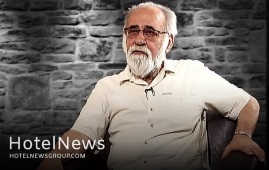
Mir-Abedin Kaboli, a celebrated Iranian archaeologist who took part in various excavations across the Iranian plateau, died on Thursday at the age of 76. Born in 1943 in Babol, northern Iran, Kaboli started his professional career at the general directorate of archeology in 1971 and since then he has participated in many archeological excavations in Haft Tappeh, Tapeh Abu Fandowa, and Shahdad, amongst some other sites, ISNA reported. Excavations at Shahdad, an ancient site in southeast Kerman province, was one of his most famed missions, which yielded jewelry from the 3rd millennium BC. An archaeological team, led by Kaboli, discovered the ruins of a developed ancient city with industrial and residential areas and a graveyard after fourteen stages of excavations in Shahdad. Kaboli was honored in 2016 as one of the greats of Iran's cultural heritage. He died of kidney failure in his hometown.
Create: Apr 3, 2021 Edit: Apr 3, 2021 Regional News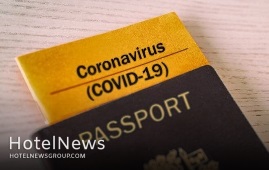
Head of the Iranian Tour Operators Association Ebrahim Pourfaraj has asked the government to issue tourist visas for the international applicants who have been fully vaccinated against COVID-19. “The Ministry of Health and the National Headquarters for Coronavirus Control can at least agree that the international tourists who have received the [second dose of] coronavirus vaccine would be allowed to enter Iran,” Pourfaraj said. He also lamented that the continuation of such a trend would result in losing international tourist markets more than before. “Or at least they should make it clear so that we can respond appropriately to foreign companies and tourists to not to miss the international tourist markets more than before.” Earlier this month, he said that the reasonable prices of Iran tours are expected to bring back the boom into the tourism sector of the country in the post coronavirus era. “Attractive tour plans are also being prepared for those who are eager to explore the historical attractions and natural wonders of the ancient country and want to experience a vacation here,” Pourfaraj said. He also expressed hope that international tour operators and companies who have worked with their Iranian counterparts for years, would put Iran back on the world’s travel route again, considering the facilities they can get at cheaper prices than in other countries. Referring to health tourism as a popular branch in Iran, he noted that medical services in Iran are provided at a lower price than what may be offered at double the price in other countries. Back in January, he announced that the tourist flow from across the world to Iran will return to normal in 2022. Although there are requests for traveling to Iran in the current year (2021), most travel agencies and tour operators believe that the flow will go back to normal in the next year, he explained. “Beginning mass vaccination against the coronavirus will provide better and safe conditions for international travels in 2022.” Last November, the World Tourism Organization announced that international tourist arrivals to Iran plunged 72% during the first eight months of 2020 when compared to 2019, highlighting the severe impact of COVID-19 as the main factor. Cultural Heritage, Tourism, and Handicrafts Minister Ali-Asghar Mounesan in October warned that Iran’s cultural heritage and tourism will be in a critical situation if the crises caused by the outbreak of the coronavirus continue. Last August, Mounesan said that Iran’s tourism has suffered a loss of 12 trillion rials (some $2.85 billion) since the outbreak of the coronavirus pandemic. Furthermore, the minister also noted that the coronavirus pandemic should not bring traveling to a complete standstill. “Corona is a fact, but can the virus stop tourism? Certainly not. For us, the coronavirus is a new experience in dealing with crises that teaches tourism experts around the world how to deal with such a disaster, and thankfully governments are turning this into an opportunity for better planning.” Smart and responsible traveling should replace "do not travel” recommendations, the minister stressed, adding: “In our country, Corona has caused problems in the tourism industry and the worrying point is the continuation of this trend.” “We are well aware of what the National Headquarters for Coronavirus Control proclaims [the health protocols], hence as a proposal, we have formulated some smart, responsible travel packages by the implementation of which we could have secure travels,” the minister said. He has repeatedly announced that his ministry is in full coordination with the Ministry of Health for strictly implementing health protocols in travel destinations, hospitably centers, and museums, amongst others, underlining that “people’s health is our priority.” The ancient land embraces hundreds of historical sites such as bazaars, museums, mosques, bridges, bathhouses, madrasas, mausoleums, churches, towers, and mansions, of which 24 being inscribed on the UNESCO World Heritage list. Under the 2025 Tourism Vision Plan, the country aims to increase the number of tourist arrivals from 4.8 million in 2014 to 20 million in 2025.
Create: Mar 16, 2021 Edit: Mar 16, 2021 Regional News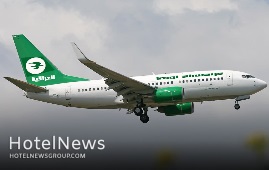
The Iranian Civil Aviation Organization of Iran on Monday announced all flights to the country from Iraq have been suspended for a week to curb the spread of a Covid-19 strain. The decision was made as a pre-emptive measure to protect the Iranian citizens against the variant which was first detected in Britain late last year. The Civil Aviation Organization in a statement announced that all flights of Iranian and Iraqi airlines from Iraq were suspended for one week effective as of Mar. 14 due to the UK COVID-19 variant, Mehr reported. Due to the outbreak of a new type of UK coronavirus and to observe necessary precautions and protect the health of citizens, effective measures have been taken in this regard, the statement added. Also, all domestic airlines are obliged to inform passengers of the case timely, the organization announced. Late in February, the CAO suspended all flights to and from 32 countries due to the latest decision of the National Headquarters for Coronavirus Control. The restrictions limited travels between the Islamic Republic and England, Angola, Bolivia, Botswana, Burundi, Cape Verde, Chile, Colombia, Democratic Republic of the Congo, Ecuador, Eswatini, French Guinea, Lesotho, Guyana, Malawi, Mauritania, Mauritania, Rwanda, Sicily, Suriname, Tanzania, Uruguay, Venezuela, and Zambia. For more than a year, the worldwide outbreak of COVID-19 has brought the world to a standstill, and tourism has been the worst affected of all major economic sectors. World tourist arrivals fell by 72% over the first ten months of 2020, according to data compiled by the World Tourism Organization (UNWTO) in December. Restrictions on travel, low consumer confidence, and a global struggle to contain the coronavirus pandemic are amongst factors contributing to the worst year on record in the history of tourism. Iran has also suffered the same fate as its foreign arrivals plunged 72% during the first eight months of 2020 when compared to 2019.
Create: Mar 16, 2021 Edit: Mar 16, 2021 Regional News
Renaissance Dallas Addison Hotel announces the completion of its top-to-bottom renovation that includes a total transformation of guest rooms, fitness center, and public spaces, as well as a redesign and upgrade of its more than 100,000 square feet of meeting and event spaces. Associate and guest safety continues to remain paramount during the pandemic with current guidelines located here. Owned and managed by Columbia Sussex, the Renaissance Dallas Addison is extremely popular for groups of all sizes and leisure travelers to North Dallas. Offering the biggest meeting space of any hotel in Addison, the hotel is located in the heart of the vibrant Addison “Restaurant Row” – just steps away from a wide variety of restaurants, nightlife entertainment and upscale shopping destinations, as well as key venues such as Addison Circle Park and Galleria Dallas. The hotel’s comprehensive renovations touched nearly every space within the property and, in keeping with the Renaissance brand’s ethos, were designed to reflect the spirit of the neighborhood, where visitors can enjoy culture, work and play. The area’s growing community of theatre, fine art, music and food invites travelers to immerse themselves in the vibrancy of the area, and the renovations reflect these ideals through neutral color palettes that juxtapose natural wood and leather materials with contemporary designs and thoughtfully-curated artistic focal points. The Renaissance Dallas Addison has implemented a number of health protocols and safety measures to allow people to feel comfortable traveling again when ready, including the option for an entirely contactless stay, social events designed to allow for social distancing, restrictions on fitness center capacity, housekeeping access to guest rooms, and thorough cleaning and sanitation protocols throughout the property that follow Marriott International’s Commitment to Clean protocols. The renovations at Renaissance Dallas Addison included: Meeting & Event Spaces Renaissance Dallas Addison’s expansive meeting and event space – totaling more than 100,000 square feet – attracts groups of all sizes to Addison and, with the biggest meeting space of any hotel in Addison, has consistently been among the city’s most popular meeting destinations. The hotel utilizes the Social Tables virtual platform to create event layouts that enable appropriate social distancing between guests and has remained a popular destination for social events during the pandemic as its space is able to accommodate up to 700 guests with proper social distancing protocols in place. This capacity will grow to 2,000 guests as restrictions are lifted. The redesigned meeting and event spaces offer state-of-the-art conference space, stylish meeting rooms, and indoor and outdoor event venues. The hotel features 37 flexible spaces from boardrooms to ballrooms, with the largest venue offering more than 25,000 square feet. Some highlights of the newly-introduced meeting offerings include: A neutral aesthetic replete with earth tones and natural fabrics reflecting the rich natural landscape and historic industries of oil and cattle that have shaped Addison Custom and innovative menus to inspire guests of all tastes and preferences – from coffee breaks and luncheons to cocktail banquets and seated receptions Anticipatory service aligned with the Renaissance brand, which intends to provide each guest with a unique and delightful experience State-of-the-art audio/visual capabilities to ensure seamless and enriching experiences for all meeting and event guests. Floorplans of the hotel meeting and event spaces are available here. Guest Rooms All 528 guest rooms, including 24 bi-level suites, ranging in size from 750 square feet to 2,400 square feet have been renovated to reflect the new design philosophy using wood, earthy tones and natural materials, coupled with a modern and upscale twist reflecting the Renaissance brand’s comfortable, modern aesthetic. The complete redesign of the hotel’s guest rooms included the appointment of entirely new furniture and furnishings, as well as upgrades to the HVAC system and plumbing. Updates to the guest rooms include thoughtful touches and elements reflective of the Dallas culture, such as the placement in each room of both a photograph of the “Blueprints” sculpture situated just behind the hotel in the Addison Circle Park and a portrait of Dallas-born musician Stevie Ray Vaughan. Additionally, each luxurious guest room is designed for optimal rest and productivity with architectural framing, contrasting finishes and wall cladding, upscale bathroom fixtures, and thoughtful solutions to enhance a guest’s stay, such as: Convenient wall outlets, lamp outlets and nightstands outfitted with USB ports for multiple electronic deviceLuxurious bedding with cotton-rich linens and fluffy pillowsHigh-speed Wi-Fi and a large desk with a well-lit workspace, comfortable chair and plug-in panels55-inch flat-panel TVs with the Marriott Entertainment Package, including premium cable and movie channels to keep guests well-entertainedIn-room refrigerator and coffee barStrategically placed mirrors, including back-lit vanity mirror and full-length mirrorsEclectic art collections featuring subjects local to Dallas. Public Spaces and Fitness Center Upon entering the Renaissance Dallas Addison, guests are immediately greeted by a fully renovated lobby. In its complete transformation, the lobby area was outfitted with new furniture, appealing light fixtures and a Discovery Table that are designed to invite guests into the public spaces with a sense of warm Southern hospitality. The new lobby also features artwork from local Dallas artists, including sculptures from Brad Oldam, and a unique interactive wall that offers a unique Texas belt buckle match game. With views leading into the newly redesigned lobby and downstairs public spaces, on-site restaurant Noell JCT will continue to offer contemporary, American-style cuisine made from fresh, locally-sourced ingredients. The adjacent Noell JCT Lounge has been updated with the addition of intimate, semi-private spaces perfect for small groups to conduct business or to unwind and enjoy an appetizer and a selection from the extensive wine list or cocktail menu. Additionally, the hotel’s on-site state-of-the-art fitness center has been transformed entirely with a larger footprint of more than 4,000 square feet and new Matrix Fitness equipment, including treadmills, stationary bikes, various weight stations and free weights.
Create: Mar 13, 2021 Edit: Mar 13, 2021 International News
As you are well aware, medical tourism is booming worldwide as about 20 to 24 million people are traveling for medical treatments annually. Factors such as increased care needs over longer lifespans, rising healthcare costs, and constant pressures on some insurance industries are reasons behind why some opt to travel abroad. Regarding price competitiveness, Iran currently ranks first in the world but the country has not been very successful in attracting potential travelers as other competitors like Singapore and Turkey. People from the Persian Gulf littoral states, Iraq and Syria as well as Iranian expatriates residing in Canada and Germany constituted the majority of medical travelers to the Islamic Republic, who received plastic, cosmetics, open-heart, and orthopedic surgeries amongst other treatments over the past couple of years. A recent study co-authored by Iranian researchers Khalil Momeni, Ali Jannati, Rahim Khodayari-Zarnaq, Shabnam Ghasemyani, and Mohamadreza Havasian, suggests the main difference between Iran other countries they selected for the study lies in the organizational structure of the main stakeholders of the tourism industry; in other countries, this industry is organized and supervised by specific coordination bodies. Data were gathered from databases, including PubMed, Web of Knowledge, Scopus, Magiran, SID, and websites of the World Tourism Association, the Ministry of Tourism, and the Ministry of Health of the selected countries from 2000 to 2020. The study was published in the Melbourne-based Healthscope, which operates private hospitals, medical centers, and international pathology services. Six countries were selected purposefully, including Singapore, Turkey, Costa Rica, Jordan, United Arab Emirates, and Iran. They were compared in terms of the status of tourism and travel competitiveness, governance and policy-making status, the status of the medical tourism industry, and medical tourism infrastructure. In terms of tourism and travel competitiveness, Singapore, with a global rank of 17, was better than other countries. Based on the status of the medical tourism industry, Costa Rica ranked 7th in the world, and Singapore, the UAE (Dubai), Turkey, UAE (Abu Dhabi), Jordan, and Iran ranked 15, 22, 27, 31 35, and 41, respectively. In Iran, all indicators of medical tourism infrastructure were lower than those of other countries except for competitive prices. Comparative tables involved components, such as general profile, tourism and travel competitiveness, governance and policy, the status of the medical tourism industry, and medical tourism infrastructure in selected countries. The framework analysis based on the identified components was used to analyze the data. Furthermore, the study has confirmed that despite the legal framework for medical tourism development in Iran, this industry is currently facing several challenges. “These challenges are lack of specific medical tourism structure at the international, national, and regional levels, the lack of a medical tourism system, definition and formulation of laws, policies, and plans, the lack of infrastructure, and the lack of supervision system.” All of the indicators in tourism and travel competitiveness are low in Iran except pricing, which is ranked as the first cheapest country in the world. The growing medical tourism industry requires the optimal provision of all tourism infrastructures and not only the promotion of different indicators, the study suggests. Based on the report of the Medical Tourism Organization, the UAE, Turkey, and Jordan are the three most important destinations for medical tourism in West Asia. Even though Iran has good conditions in terms of competitive price, presence of skilled physicians, and low waiting time among the studied countries, but other medical tourism infrastructures are not enough invested. For example, until 2017, Iran has not been able to obtain a JCI license even for one hospital, and the average per capita physician/nurse index is much lower than the global one. To promote medical tourism, it is necessary to recognize the strategic medical tourism status of each province in the country, supply a specialized workforce, provide high-quality services, improve infrastructure, and promote a positive attitude of authorities to support the medical tourism industry. The study has also found that factors that can play a positive role in the development of medical tourism in Iran are advanced services for infertility treatment, cosmetic and dental surgery, organ transplantation and cell therapy, cultural similarity and familiarity with neighboring countries, and competitive prices. Measures, such as improving human resource communication skills and developing private hospitals following international standards, can also be effective in developing medical tourism. The main difference between the selected countries and Iran lies down in the organizational structure of the main stakeholders of the tourism industry. The study showed that one of the challenges for growing medical tourism in Iran is the presence of different organs of political and decision-making, as well as the cultural and political conditions. In all other countries, this industry is organized and supervised by specific coordination bodies. The revise of coordinating policies and strategies between various ministries, other government bodies, the private sector could help facilitate cross-sectoral coordination in this area. One of the important factors in the development of the medical tourism industry is the focus on attracting tourists from neighboring countries. Generally, certain populations are attracted more to certain locations. This might be due to a similar ethnic and cultural background. “To increase Iran’s ability to compete with countries in the region, such as Turkey, in attracting medical tourists, long-term plans should be developed to strengthen the infrastructure and cultural reforms, increase private sector participation and plan for the efficient use of mass media and local press for raising awareness. This requires a national effort and redefining the role of health tourism in the economy, as well as a strong trustee to follow up these measures,” the study suggests. According to the authors, the strengths points of the present study are the comprehensiveness of the selected countries and obtaining systematic information according to the appropriate strategy search. One of the limitations of the study is that in many items, the existing indicators are not updated, and some of the documents were in languages other than English and Persian. The Islamic Republic has set goals to exceed its yearly medical travelers to around two million in [calendar year] 1404 (March 2025-March 2026). Amongst Iran’s trump cards are the presence of credible surgeons and physicians, cutting-edge medical technologies, high-tech medicine and diverse specializations, super affordable procedures, and finally its hospitable people.
Create: Mar 13, 2021 Edit: Mar 13, 2021 Regional News
